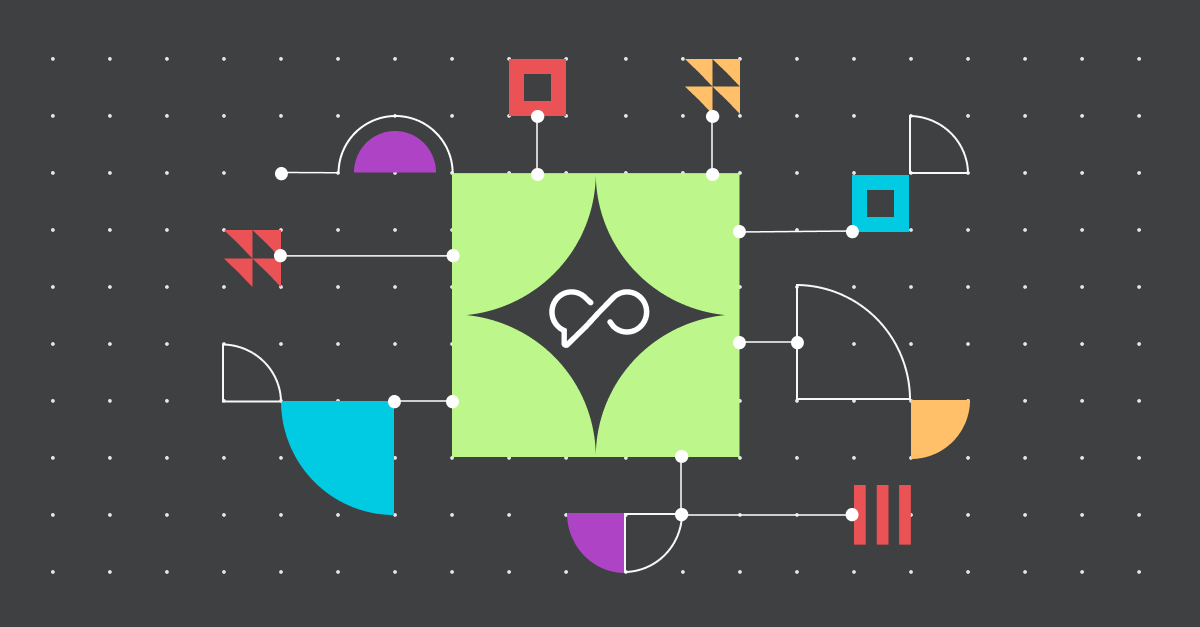
Falco Feeds extends the power of Falco by giving open source-focused companies access to expert-written rules that are continuously updated as new threats are discovered.
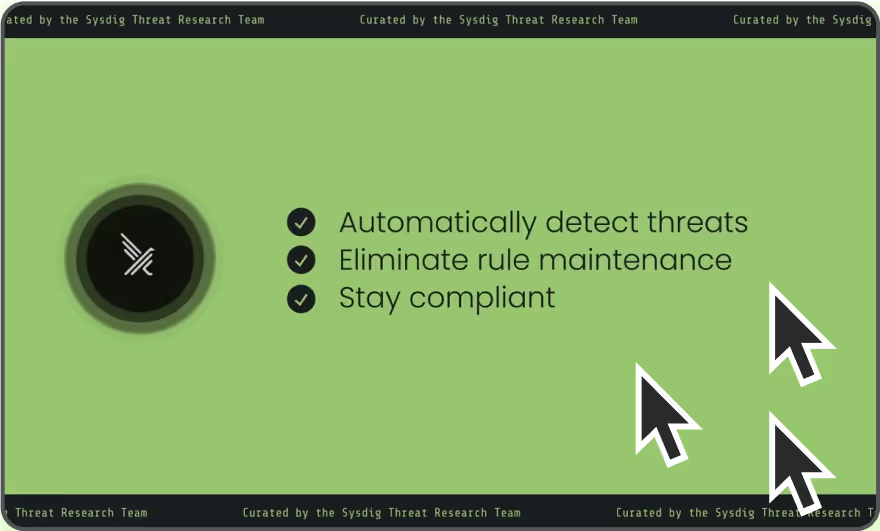
Vulnerability management has come a long way, but many teams are still stuck guessing. Even if you’re able to sort through the noise and complexity of modern cloud environments to identify your top problems, it’s not always clear how to fix them, who should do it, or whether your effort will actually have a measurable impact. You can fix your top critical issue every day and still end up with weak security posture.
At Sysdig, we’ve helped customers cut through the noise with real-time risk context and runtime prioritization, but that’s just the first step. With our latest vulnerability management release, we’re closing the gap between insight and action by adding new intelligent remediation capabilities. Powered by Sysdig Sage, our AI cloud security analyst, these recommendations help security teams reduce risk faster and maximize their ability to reduce real attack surface.
What’s new?
Recommended remediations are integrated directly into Sysdig’s vulnerability management workflow, guiding users from identification to resolution. After identifying the images contributing the most risk in your environment, Sysdig surfaces simple, high-impact fixes to improve security posture quickly, without breaking application dependencies or creating more work for developers.
Let’s walk through how this process works. Sysdig gives you flexible views of vulnerability data, with filters to slice and dice findings by key risk factors like exposure, exploitability, and whether a vulnerability is tied to an in-use package at runtime. You can also group findings by container image, using context from across the platform to identify which images contribute most to overall risk. Sort by total number of findings to highlight the most vulnerable images, or by associated resources to focus on the images deployed in the most places.
This helps teams focus on the root sources of problems. Without this kind of insight, vulnerability management often turns into chasing issues one by one. Sysdig gives you a prioritized list of images, enabling users to target remediation where it has the biggest impact and save valuable time.
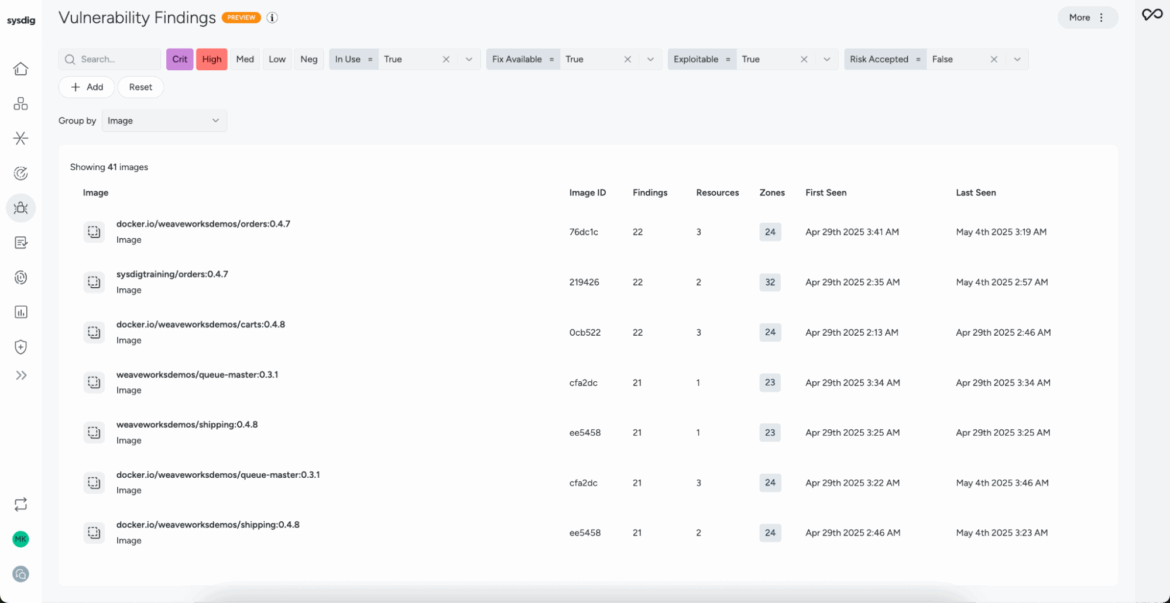
Once you’ve identified an image to focus on, you can dive deeper using Sysdig’s Resource360 view — a real-time snapshot of all findings, packages, and remediation options tied to that resource.
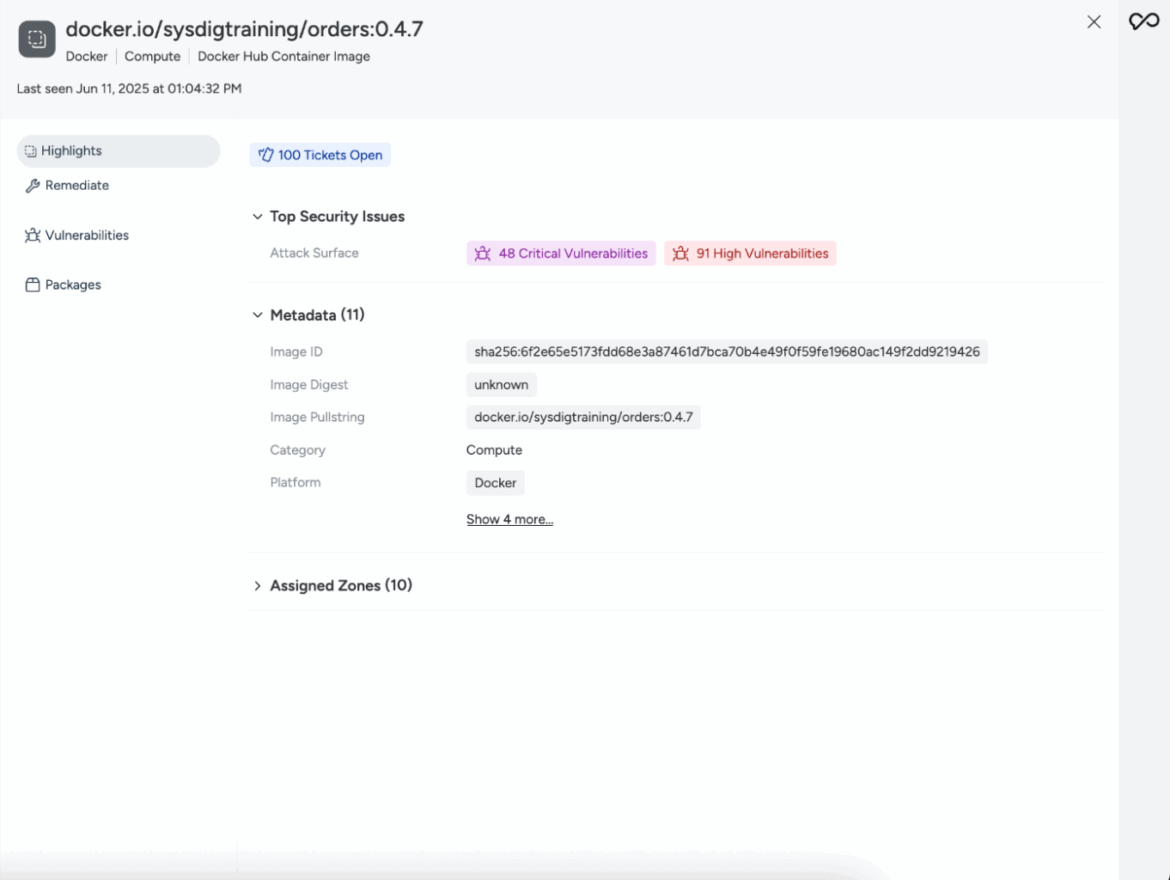
From there, Sysdig Sage, our AI cloud security analyst, steps in with remediation recommendations designed to maximize risk reduction without creating a massive disruption to your development teams. A blanket “update everything to latest” approach might technically fix all your issues, but it could also break half your application. Engineering teams aren’t going to compromise a major project just to patch a few CVEs. Instead, Sysdig Sage recommends targeted fixes that are effective, low-friction, and unlikely to trigger the kind of pushback that stalls progress and leaves vulnerability tickets to wither away at the bottom of backlogs.
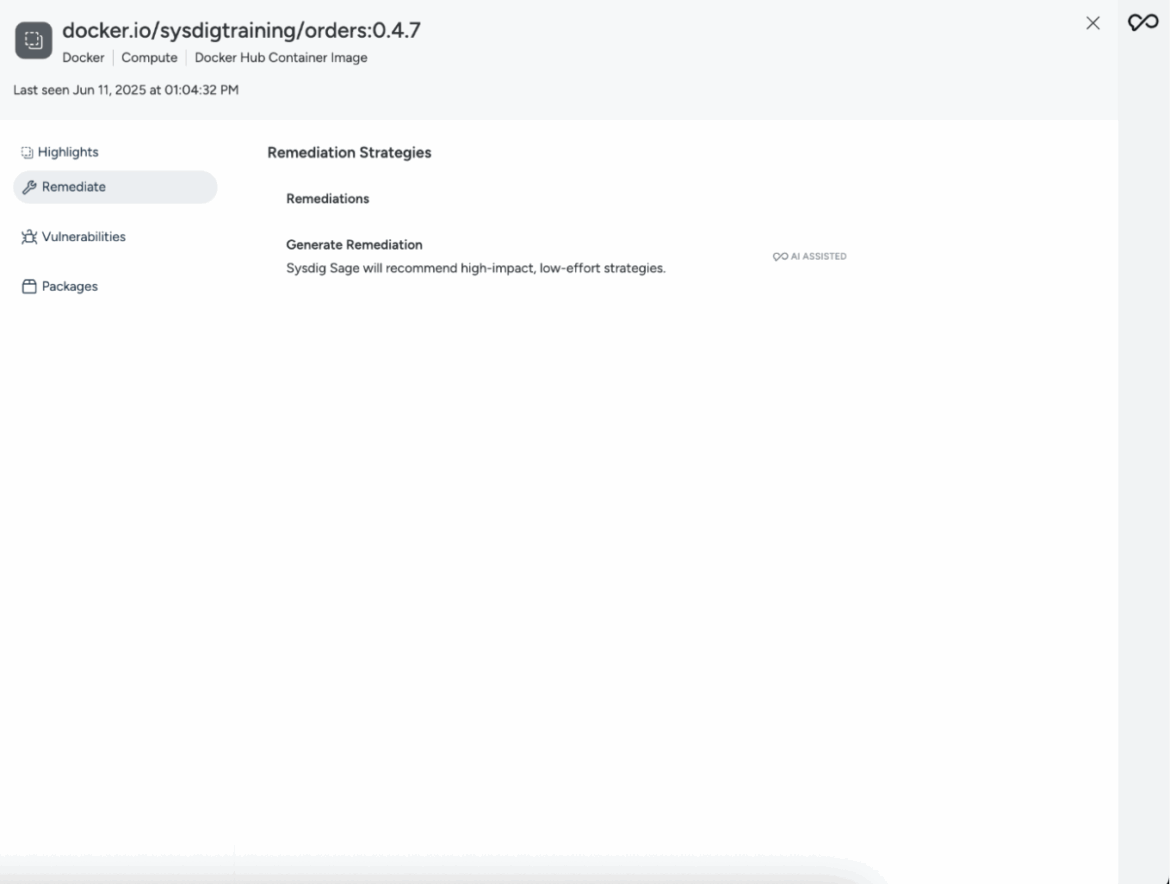
Sysdig Sage also breaks it down with step-by-step instructions in natural language. This could be recommending upgrades to the base image as well as minor version upgrades. From there you can instantly create a ticket and pass it along to your engineering team. Developers receiving that ticket will see exactly why it matters, what to do, and what the impact will be — like fixing 10 critical vulnerabilities across 342 workloads.
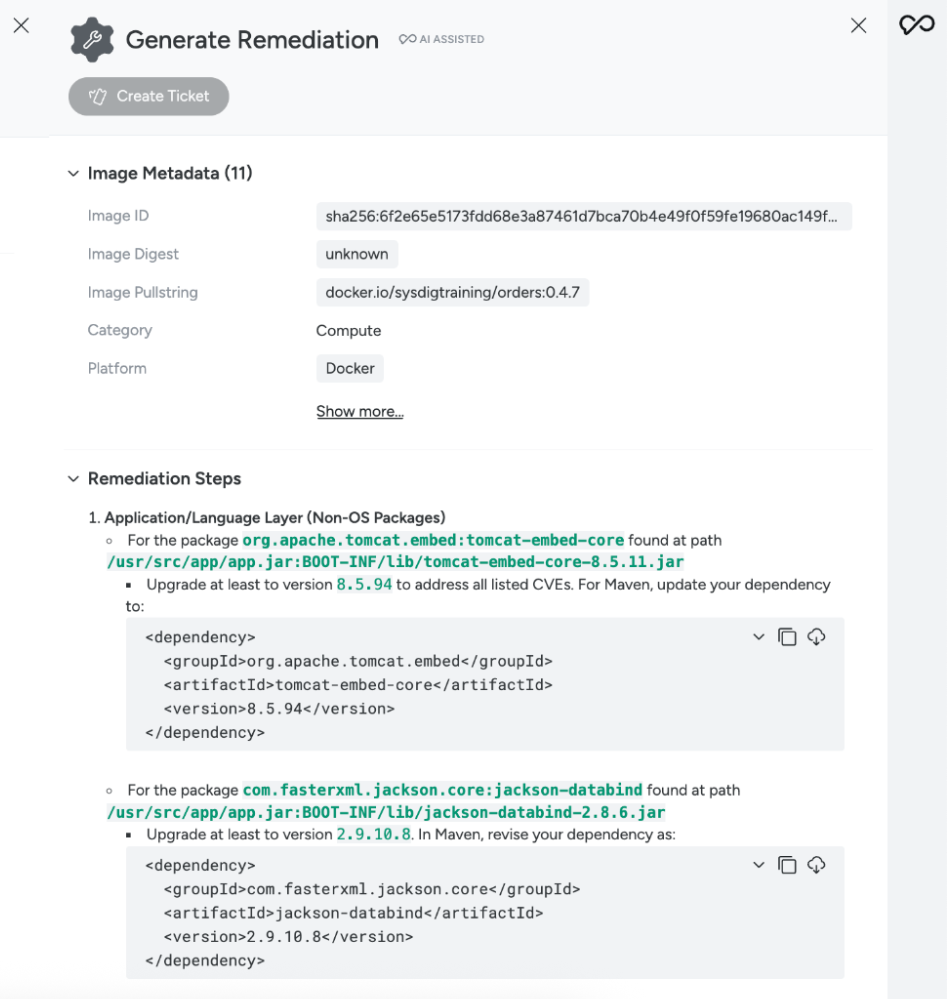
From Prioritization to Resolution
With this release, Sysdig empowers security to move beyond basic prioritization of individual vulnerabilities and take meaningful action by fixing the sources of those issues. By combining intelligent remediation with real-time context and integrated workflows, we’re helping organizations save time and take control of their risk.
Finding vulnerabilities is easy, but resolving them quickly and effectively is how security teams prove impact. With Sysdig, fixing what matters just got a whole lot easier.
See our new release in action in the on-demand webinar, or request a demo today.


